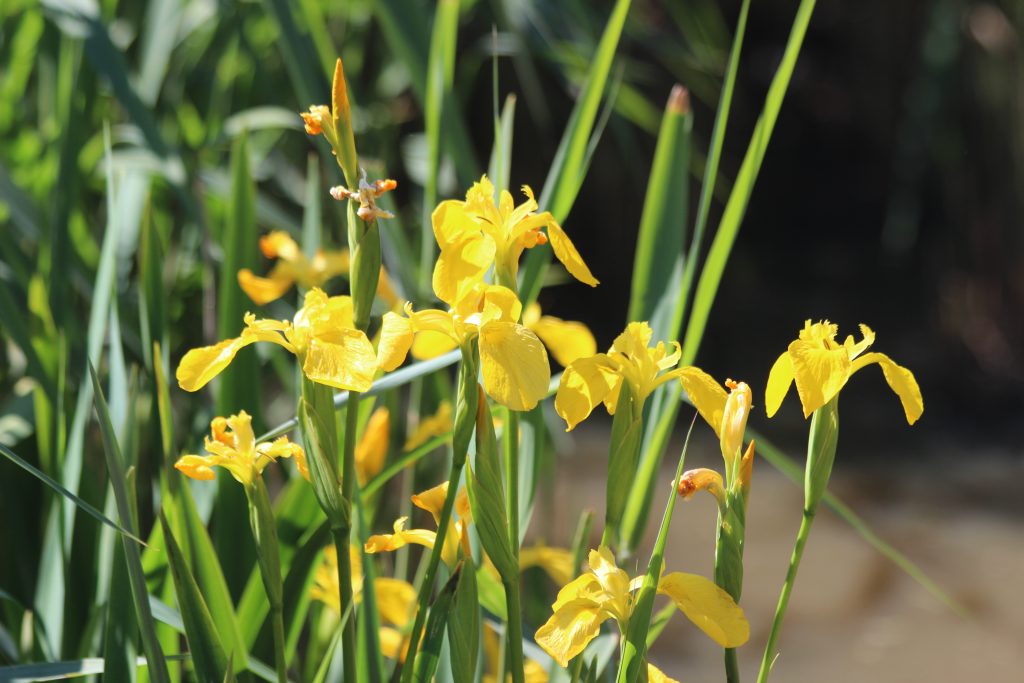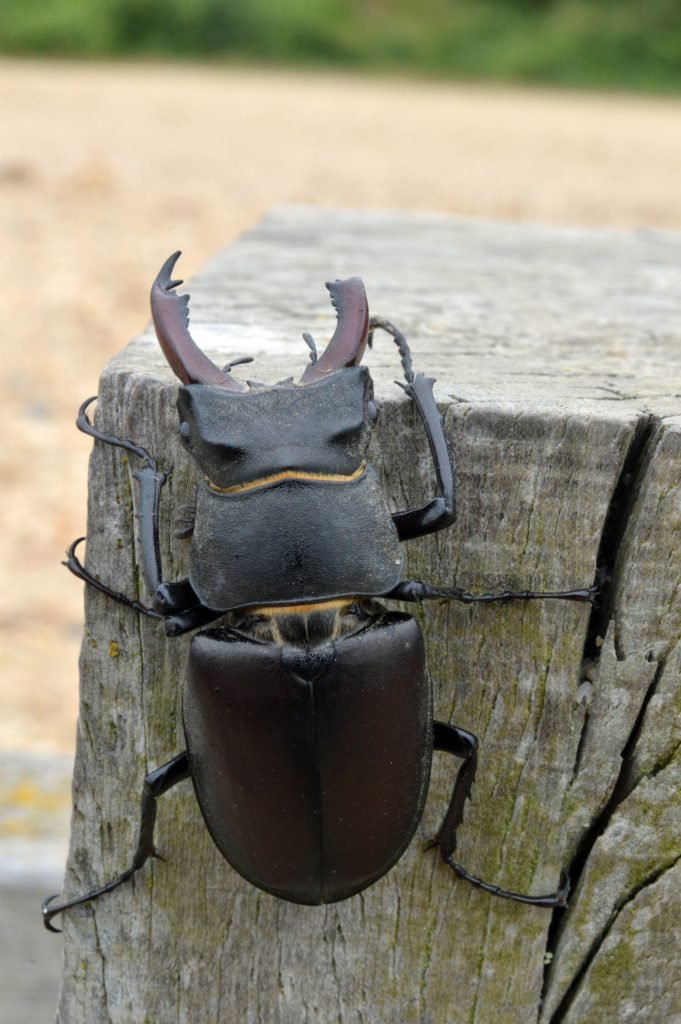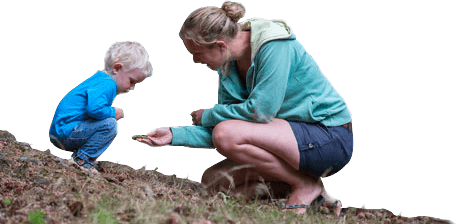June wildlife highlights
PUBLISHED ON: 2 JUNE 2025Wildlife is bursting with activity in the New Forest in June. The days are long, temperatures are warmer, and many species are busy above ground, feeding, breeding or flowering. Midsummer Day falls on 24 June, marking the halfway point of the year and the height of the summer season.
Wildflowers in bloom this month are the dog rose, enchanter’s nightshade, foxglove, self-heal and honeysuckle. Along the coast, you may find yellow horned poppy growing in shingle and sand dunes. Large, white petalled and sweet-smelling elderflowers are also easy to spot at this time of year, particularly along roadsides.
The New Forest is the only place in Britain where the wild gladiolus (below) grows naturally. It’s very rare and can sometimes be found growing among bracken on the edge of ancient pasture woodland. If you come across one, enjoy and take a photograph, but don’t pick or disturb it.

Streams and rivers are good places to look for damselflies in June. Look out for the very aptly named beautiful demoiselles (header photo), with their dark coloured wings and butterfly-like flight around fast flowing, sand and gravel bottomed New Forest streams. The similar, and closely related, banded demoiselles have a large “splodge” of colour, like an inky thumb print, on an otherwise clear wing and will be found by the slower moving, mud and silt bottomed rivers. By mid-June, all UK damselfly species have become active adults. Dragonflies follow closely behind, and heathland pools are another excellent place to see both groups in action.
Yellow flag irises (below) are in full flower around wetland margins. Other small wetland plants to look out for include gypsywort, watermint, water forget-me-not, and brooklime, all of which can be found along the damp edges of streams and ponds.

Trees in the Forest are now all fully in leaf, providing shade and sanctuary for a wide-range of wildlife. Birds are quieter at this time of year. Most are focused on feeding their young and can be seen carrying food back to their nests.
House martins, sand martins, swallows and swifts, all feed on insects and can be seen skimming low in the sky across the New Forest in search of food. Swifts are the largest of these incredible aerial acrobats and their boomerang-like shape, accompanied by their distinctive high-pitched screams are unmistakable. House martins are easy to recognise by their white bellies and rumps and will be returning to feed chicks in their mud-cup nests under house eaves. Swallows also make a mud nest, but these are usually constructed on a ledge or the joist of an open outbuilding, like a shed or barn. They are best identified by their distinctive long forked tails. Sand martins are smaller than the other three species and are much browner in colour on the upper body with a dark band beneath the throat, which contrasts with the otherwise pale underparts. They excavate a nest in the sandy banks and cliffs of rivers, coast and quarries.

June evenings are a great time to look and listen out for some truly iconic New Forest wildlife. Nightjars are one of our heathland ground-nesting birds and are only active at night, when they feed on moths and other insects caught on the wing. They also sing at night, an eerie but beautiful churring sound. They are very hawk-like in flight with long, pointed wings and a long tail. Males have a white spot on each wing that can sometimes be seen.
Male stag beetles (above), with the imposing antler like jaws for which they are named, are most active on warm, humid evenings an hour or two before dusk when they take flight in search of the antler-less, but still impressive, females. At up to 7.5cm in length they are Europe’s largest beetle!
If you spot any interesting wildlife whilst out and about in the New Forest please share a photo with us on Facebook or Instagram.

